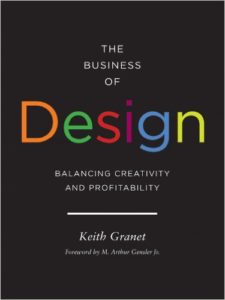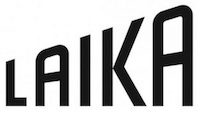In between a hectic project schedule, I have also committed myself to a reading list of books, the first half of 2018 is already behind me (can’t believe!) and I’m just letting myself wade through this hot summer with some practical knowledge books. I am already through a few titles and I am attempting to get that number up with some interesting non-fiction titles lined up for the latter half of 2018, so fingers crossed. I only decided to read about design so far, but now I’m accessing titles on communications, psychology, strategy, business and marketing. My overarching goal from reading the books is to broaden my vision of how I could commit to my long-term objective of merging creativity with building a value proposition for products while staying focused on service innovation & customer experience. Lastly, instead of doing an annual review/recommendation of books I decided to write a post as soon as I finish some volumes just so that I get my views out to the world quickly. Which also helps me to remember the value of my reading list and the freshness of the knowledge I gain each year.
The Business of Design: Balancing Creativity and Profitability (by Keith Granet)
 Even though the target audience for this book seemed like the architects and interior designers, this book didn’t disappoint me so far as comprehending the principles of business were concerned. Keith Granet brings his insights from his experience of 30 years from bringing profitability to customers and setting up his architecture design firm Granet & Associates from spending considerable time on projects as a full-time employee. There are some terms and details which could be only be comprehended by someone from that industry, like for instance, the promotion cycles for employees or the contractual obligations for clients, etc., but despite that seemingly nonessential information, the rest of the principles in the book from billing and human resources, to managing a team, stay pretty much relevant as foundations for setting up any business. In the end, this book is profound and inspirational in its approach towards design entrepreneurship, even if you don’t plan to work as an architect or an interior design.
Even though the target audience for this book seemed like the architects and interior designers, this book didn’t disappoint me so far as comprehending the principles of business were concerned. Keith Granet brings his insights from his experience of 30 years from bringing profitability to customers and setting up his architecture design firm Granet & Associates from spending considerable time on projects as a full-time employee. There are some terms and details which could be only be comprehended by someone from that industry, like for instance, the promotion cycles for employees or the contractual obligations for clients, etc., but despite that seemingly nonessential information, the rest of the principles in the book from billing and human resources, to managing a team, stay pretty much relevant as foundations for setting up any business. In the end, this book is profound and inspirational in its approach towards design entrepreneurship, even if you don’t plan to work as an architect or an interior design.


 Going beyond the realm of the classic animation films by Disney-Pixar, some time ago, I had experimented with a flick about a boy who could communicate with ghosts called ParaNorman and was awe-inspired by its animation technique. Down the road, I watched the fantasy horror flick Coraline which involved an “adventurous girl finding an idealized parallel world behind a secret door in her new home”, and most recently I thoroughly admired the story and the action in The Boxtrolls which is about trash collecting trolls raising a boy. The art behind these movies called ‘3D stop-motion’ is about maintaining balance in the intricate movement of objects while filming each frame. Also referred to as ‘claymation’ since they use plasticine figures which are naturally flexible for sculpting movements. Not surprisingly, they have all been
Going beyond the realm of the classic animation films by Disney-Pixar, some time ago, I had experimented with a flick about a boy who could communicate with ghosts called ParaNorman and was awe-inspired by its animation technique. Down the road, I watched the fantasy horror flick Coraline which involved an “adventurous girl finding an idealized parallel world behind a secret door in her new home”, and most recently I thoroughly admired the story and the action in The Boxtrolls which is about trash collecting trolls raising a boy. The art behind these movies called ‘3D stop-motion’ is about maintaining balance in the intricate movement of objects while filming each frame. Also referred to as ‘claymation’ since they use plasticine figures which are naturally flexible for sculpting movements. Not surprisingly, they have all been 